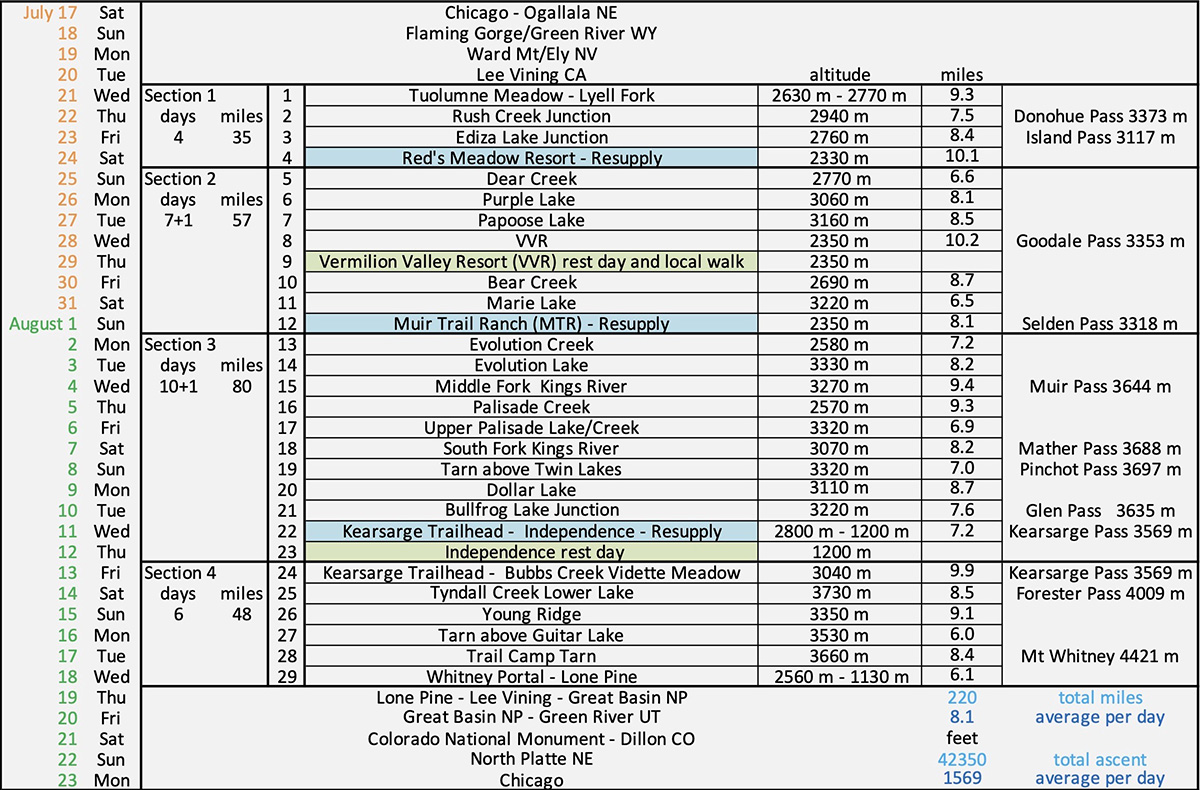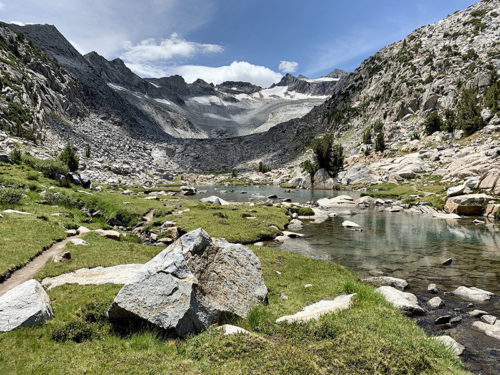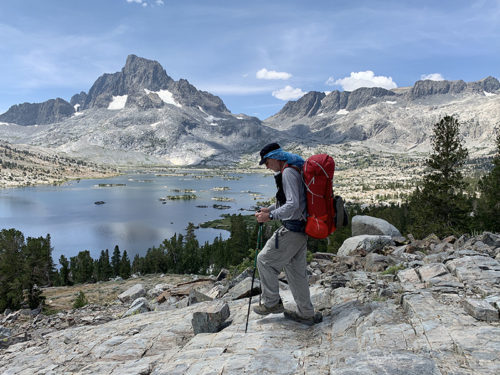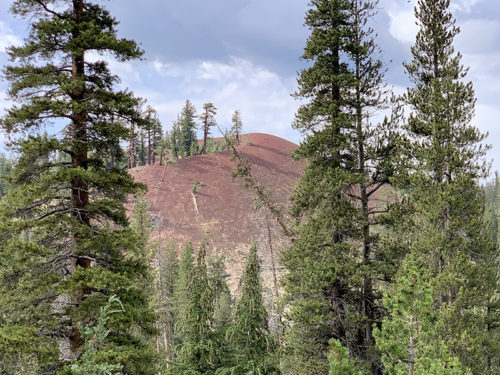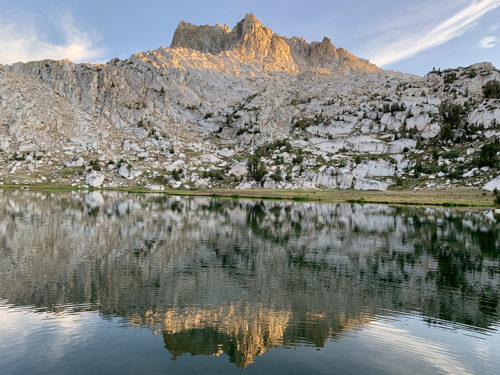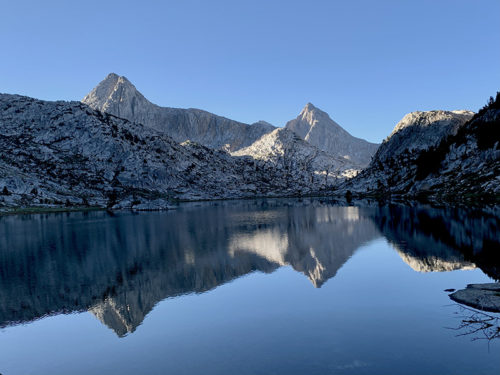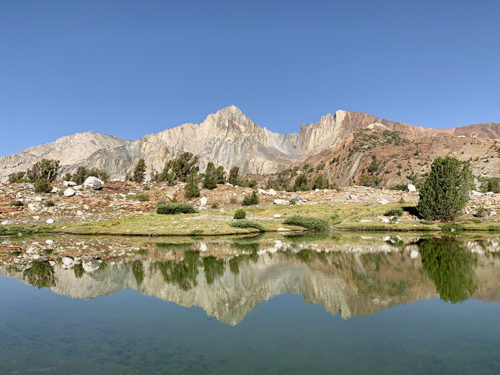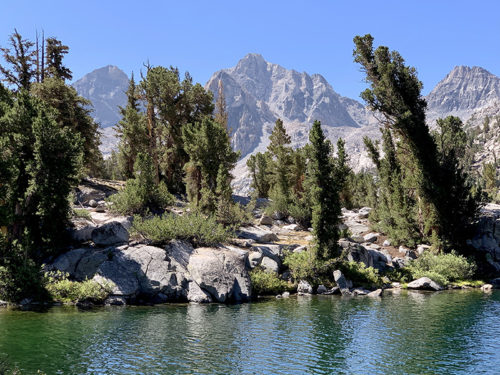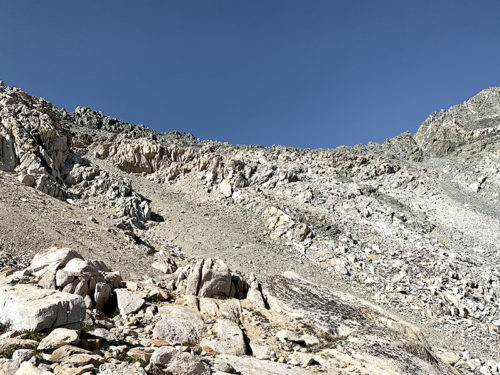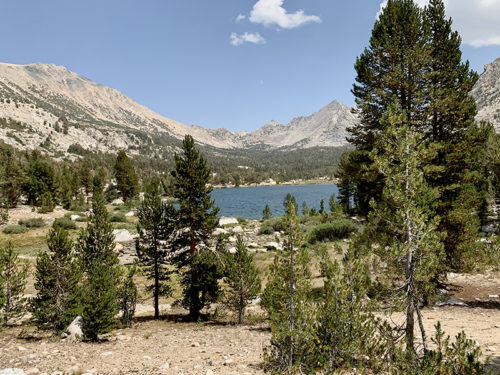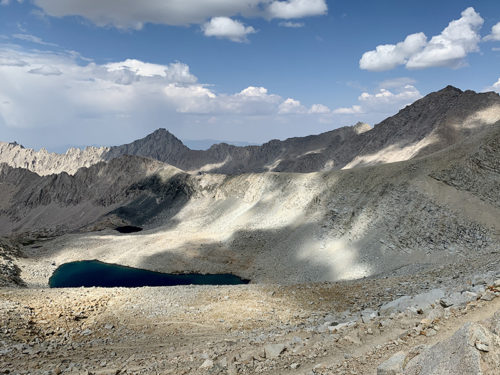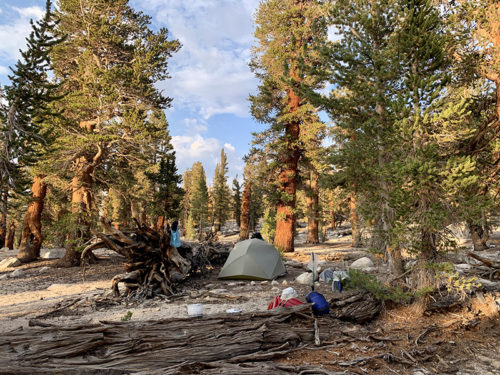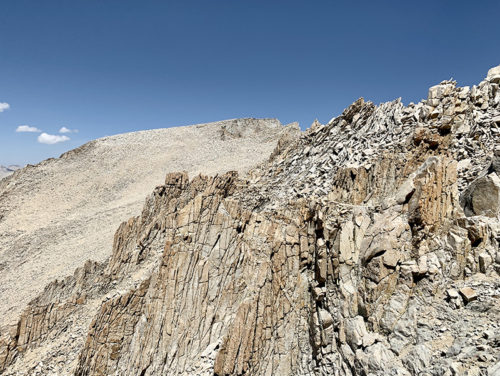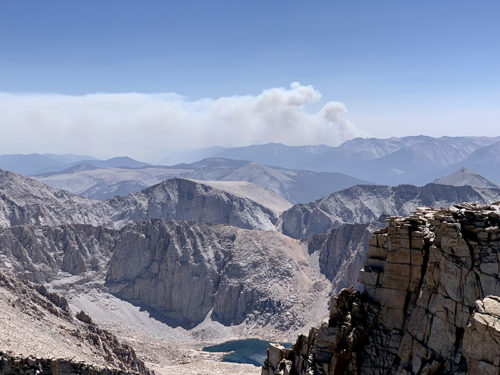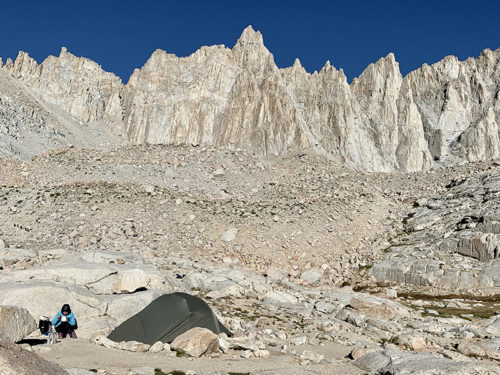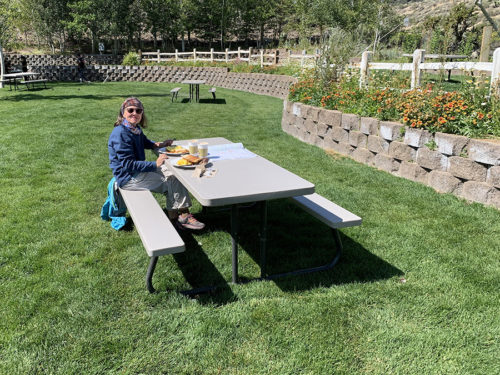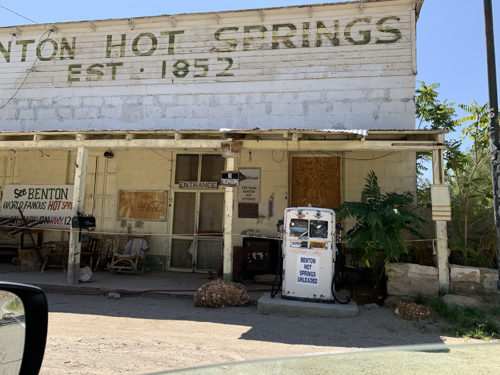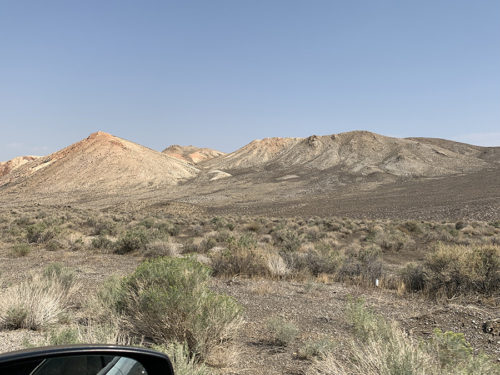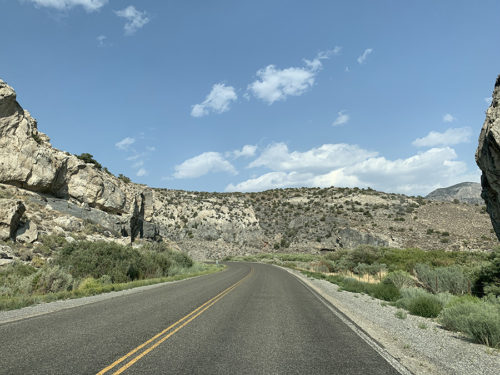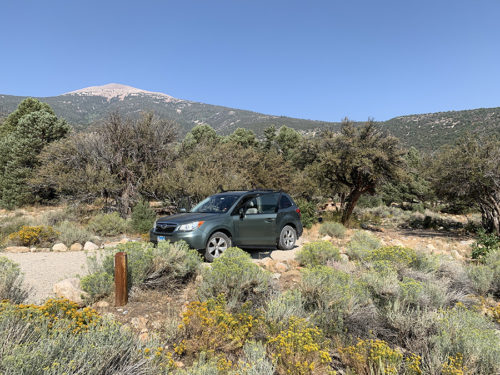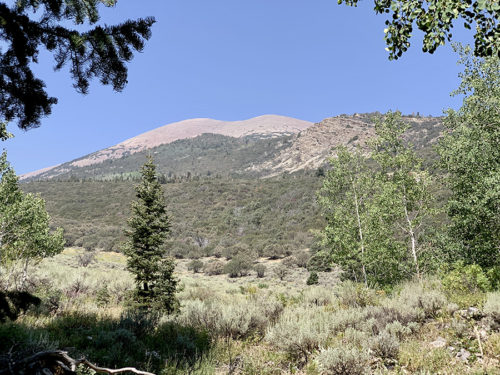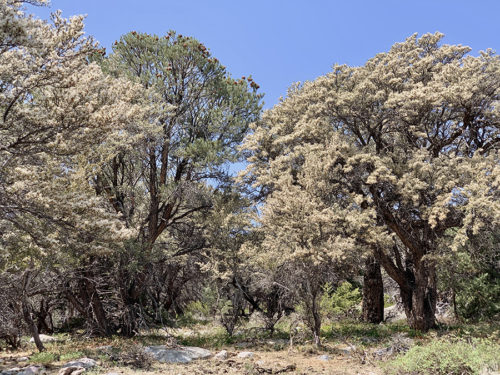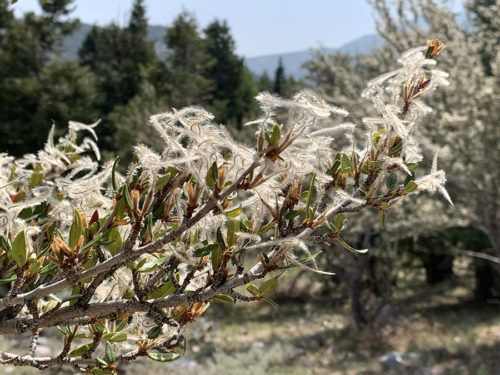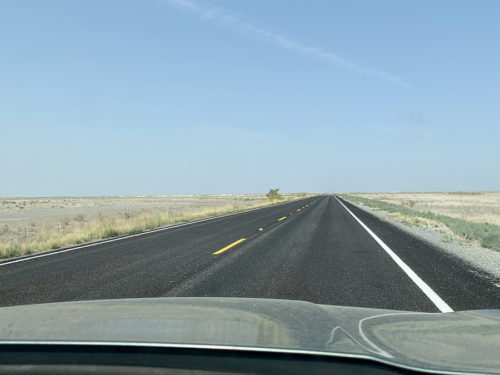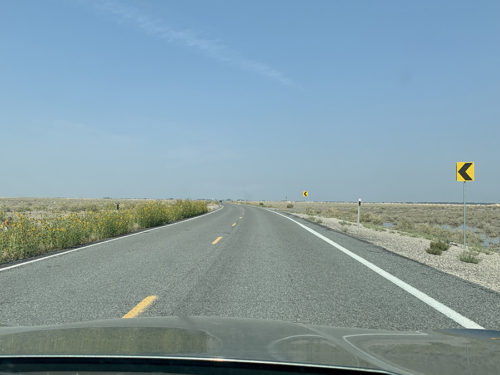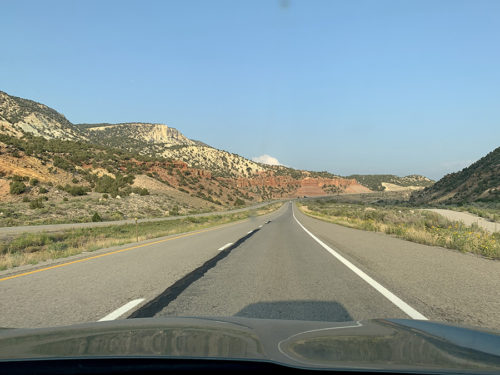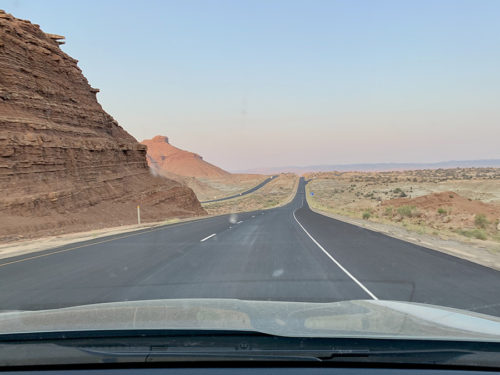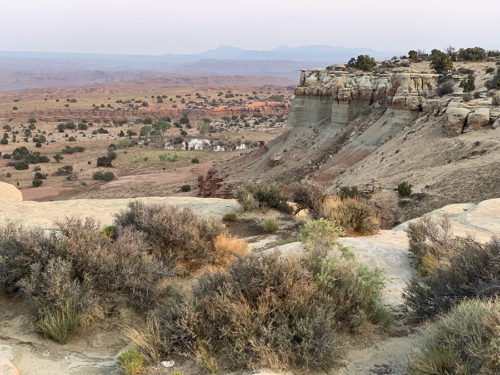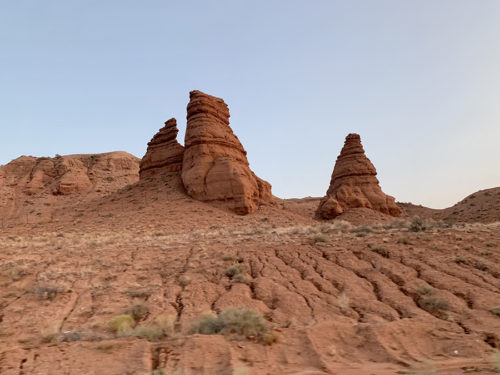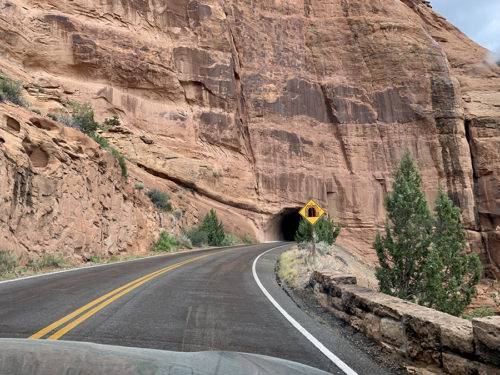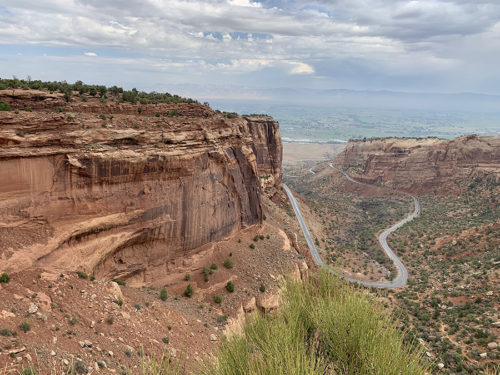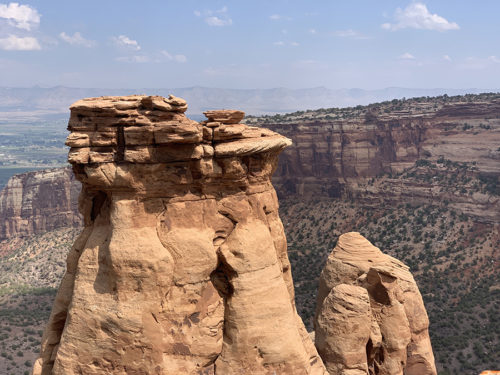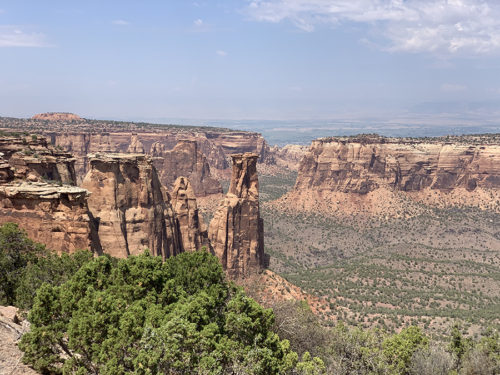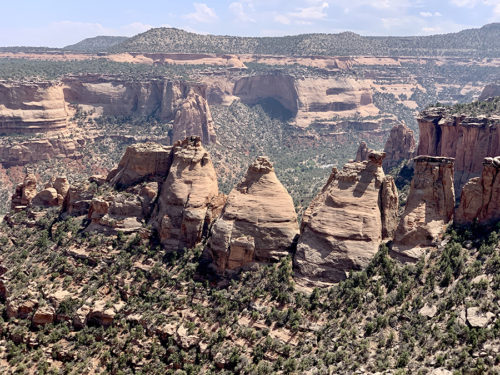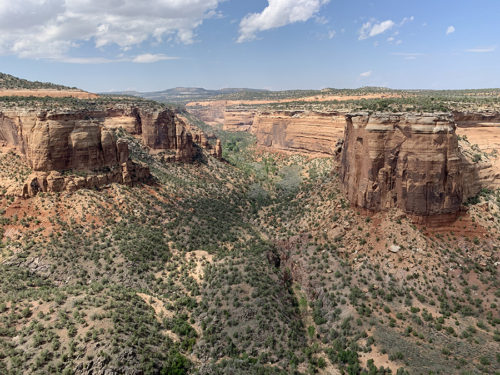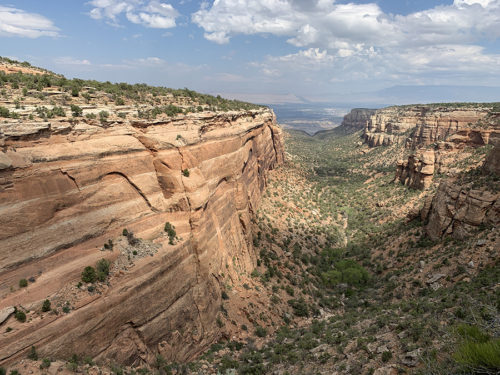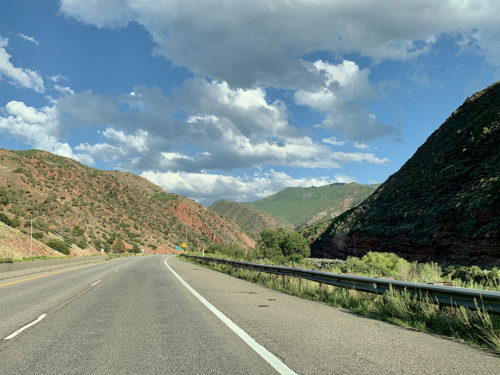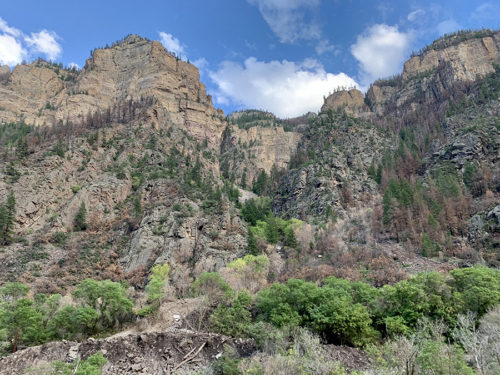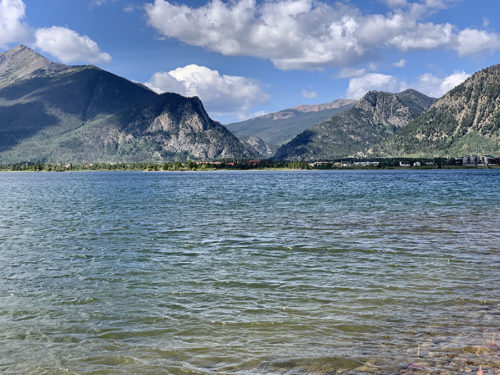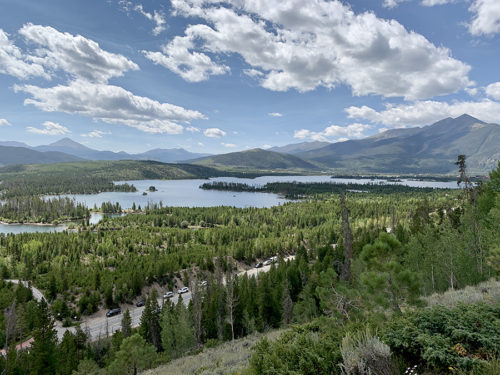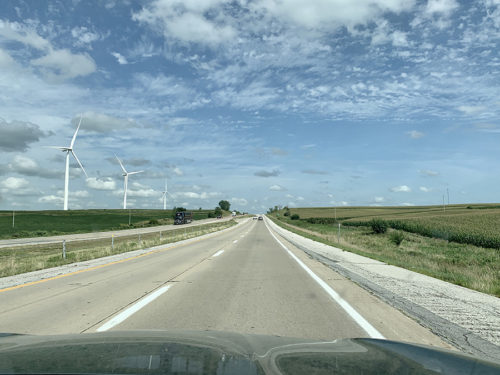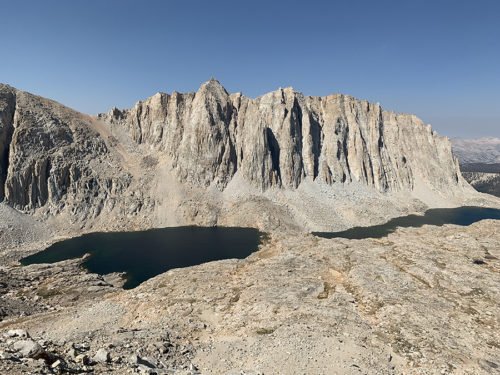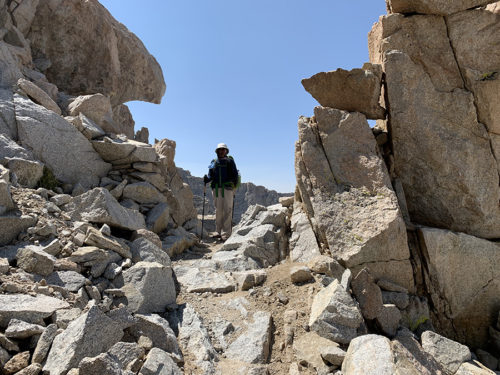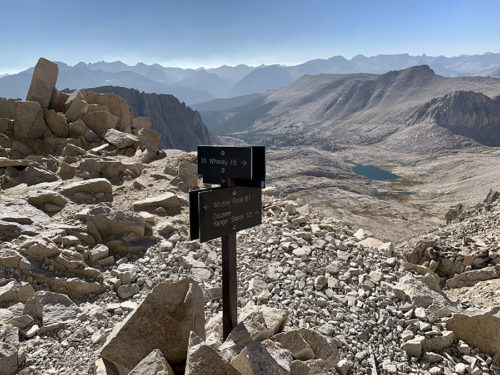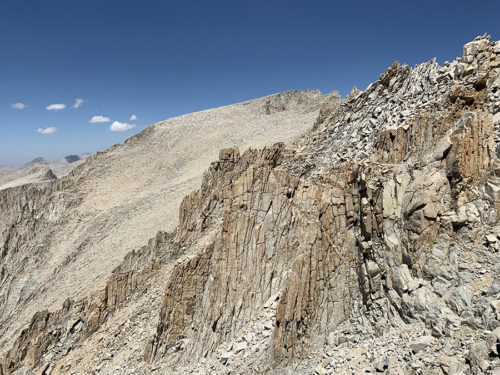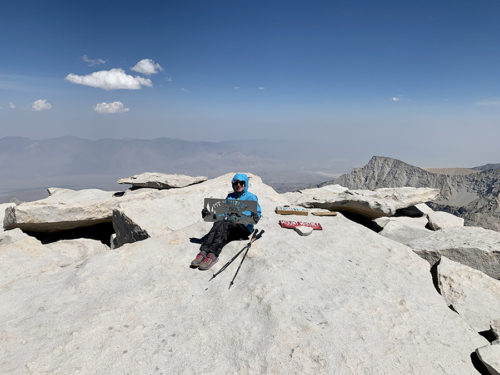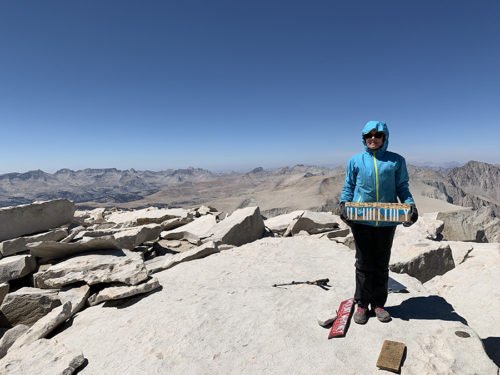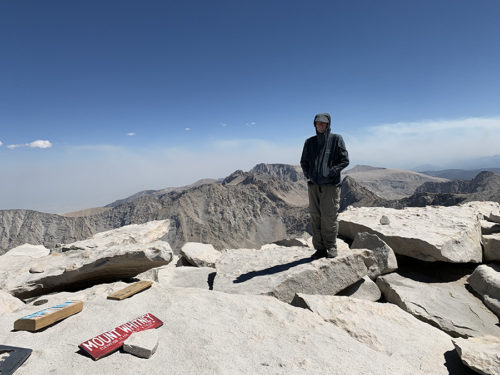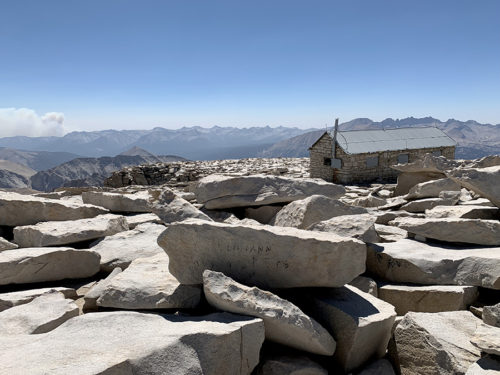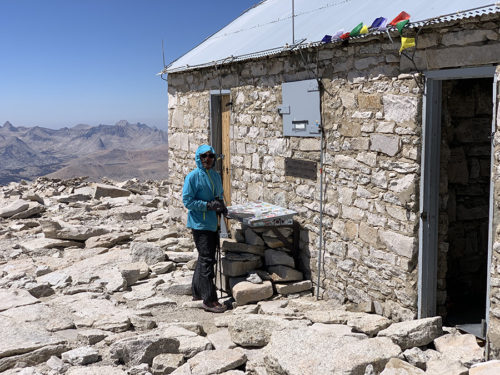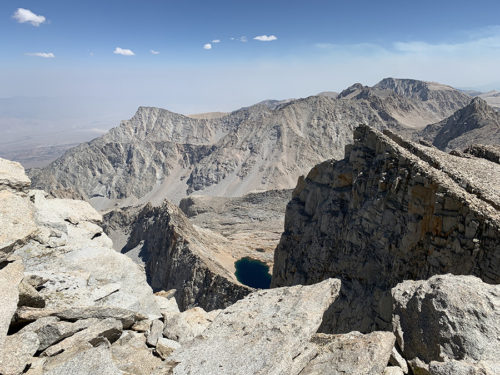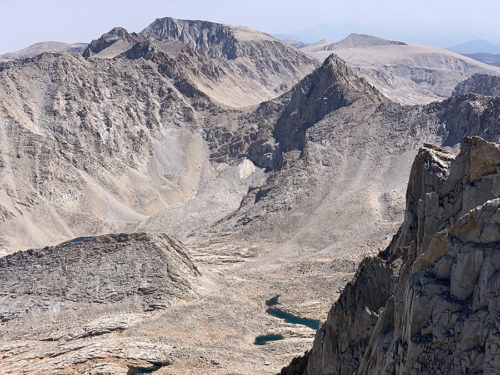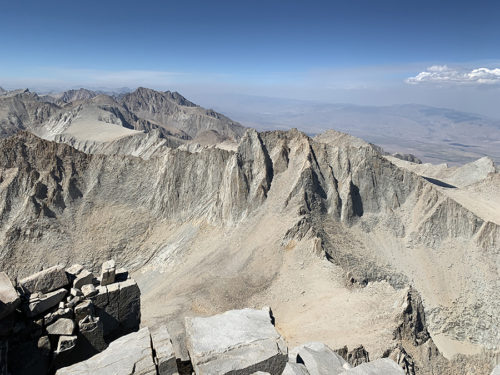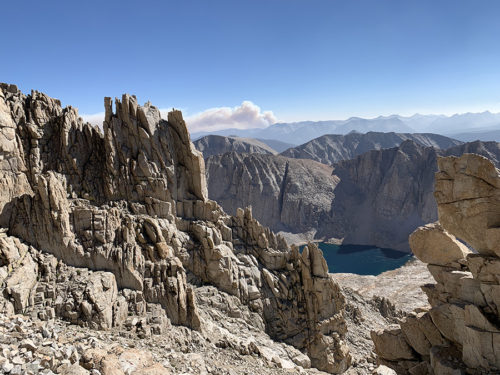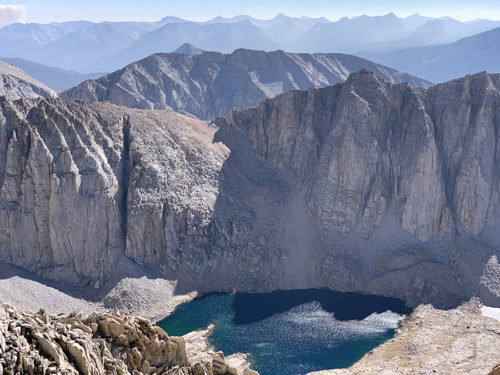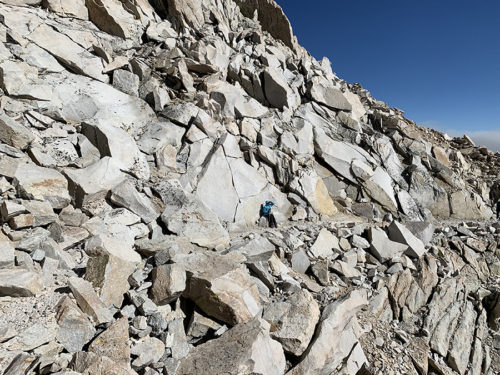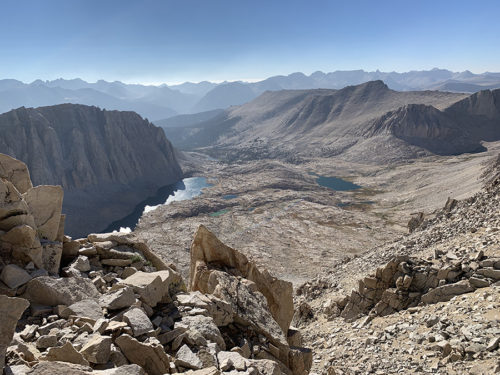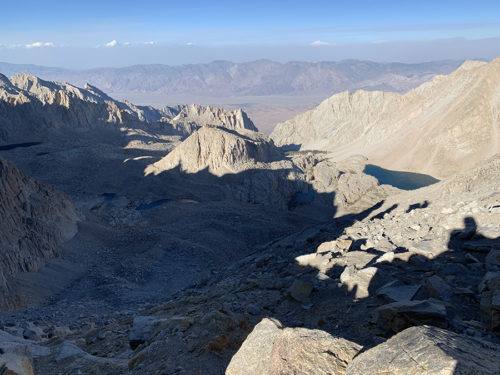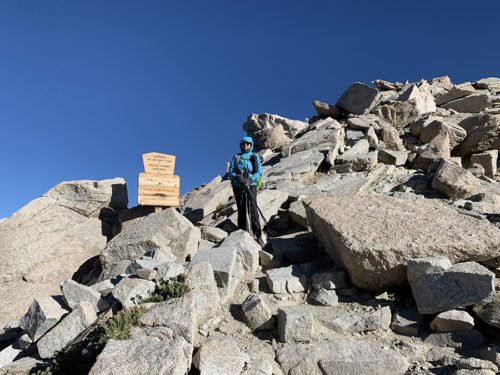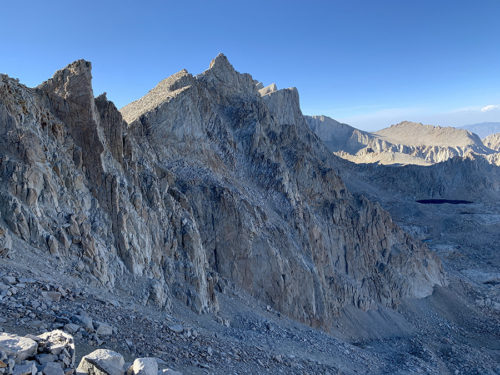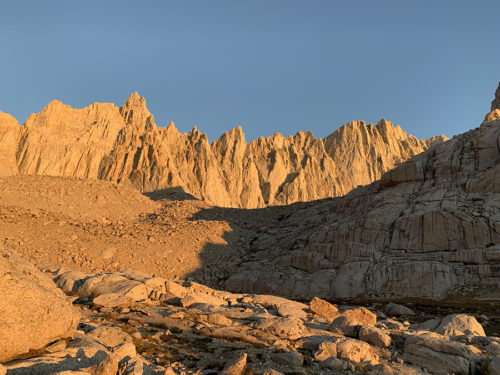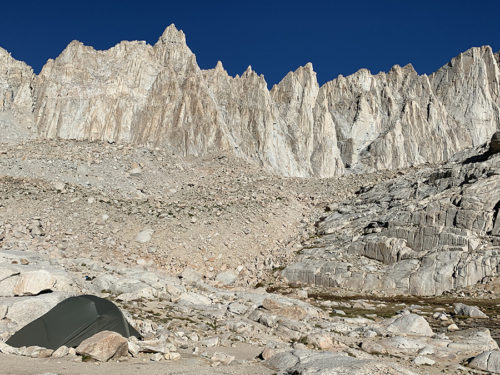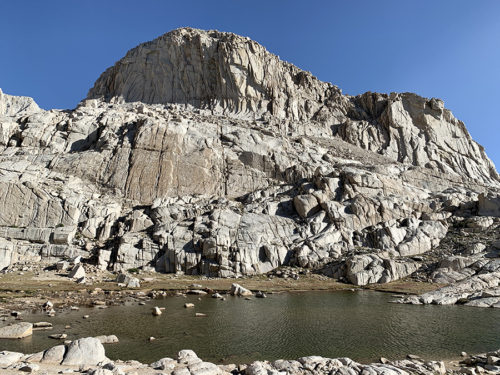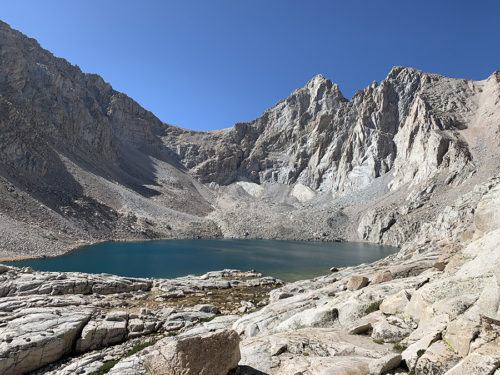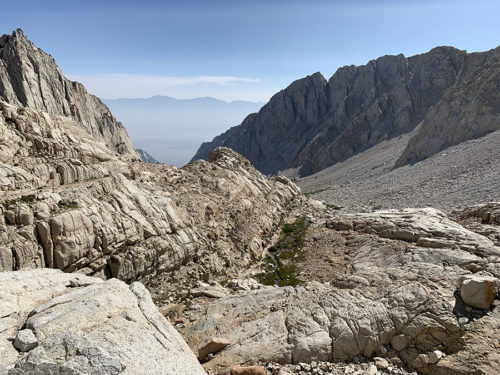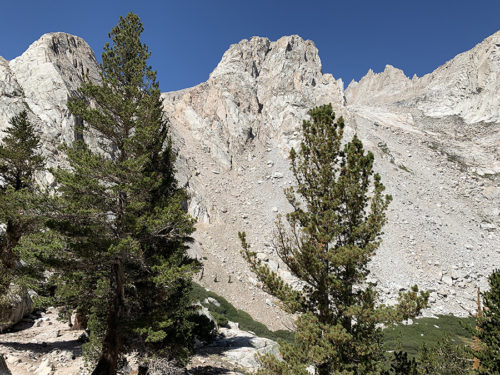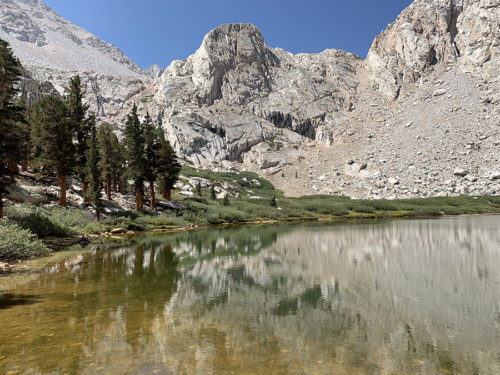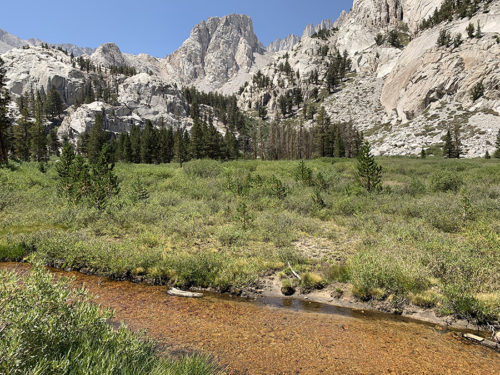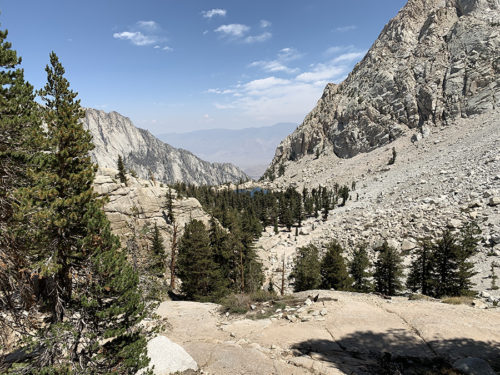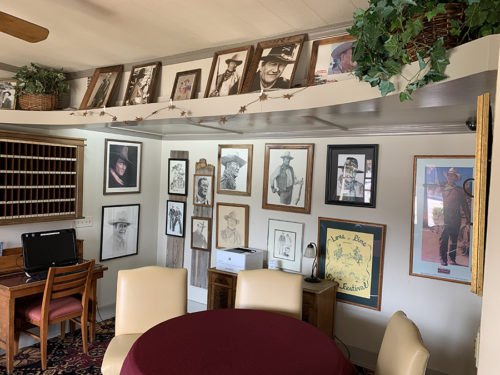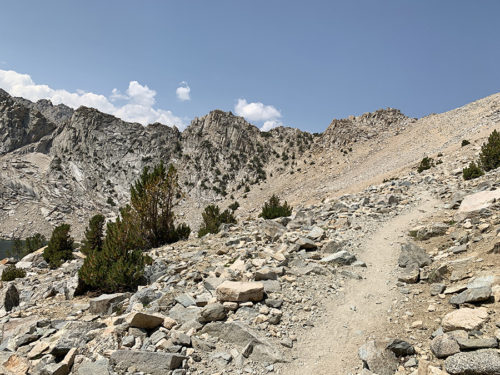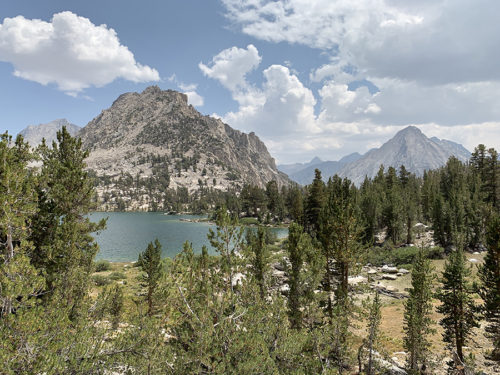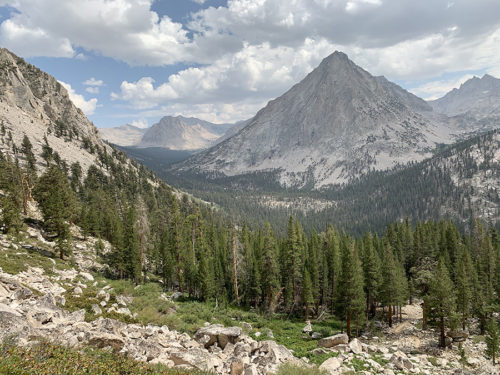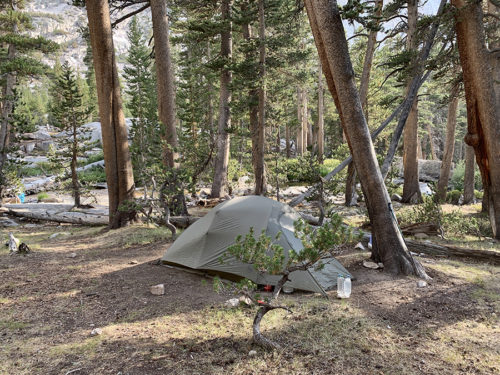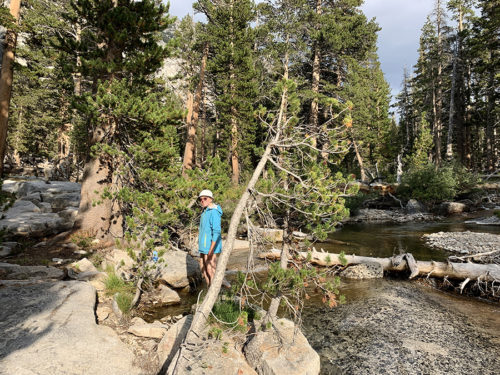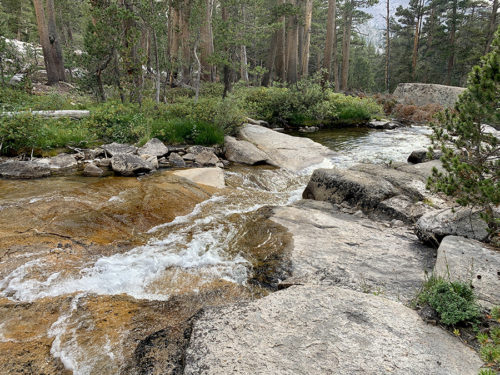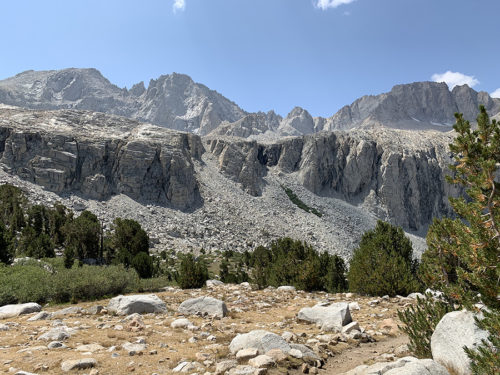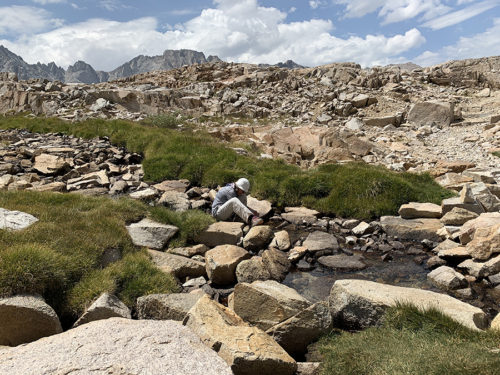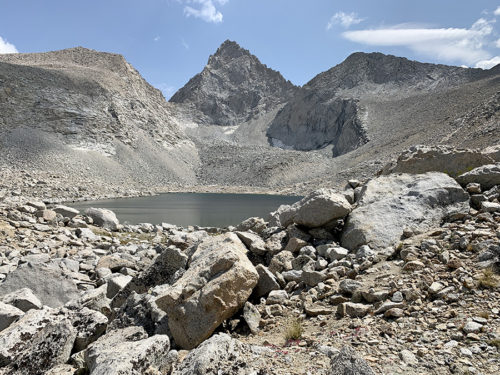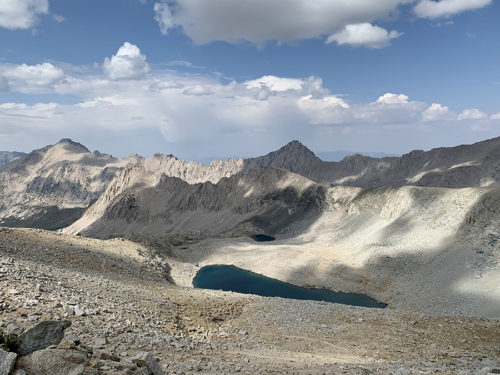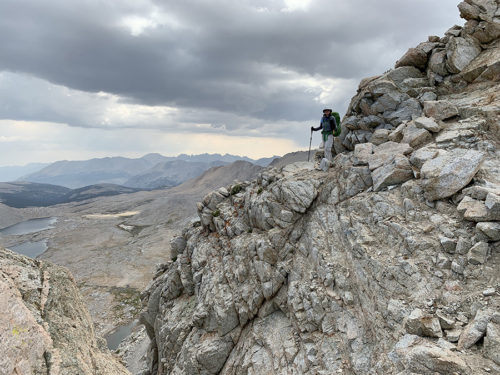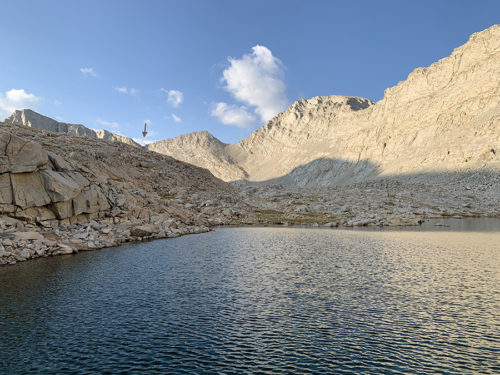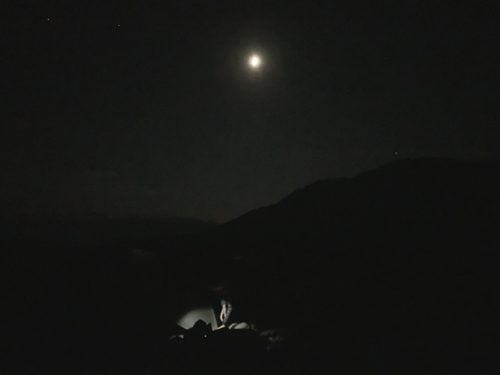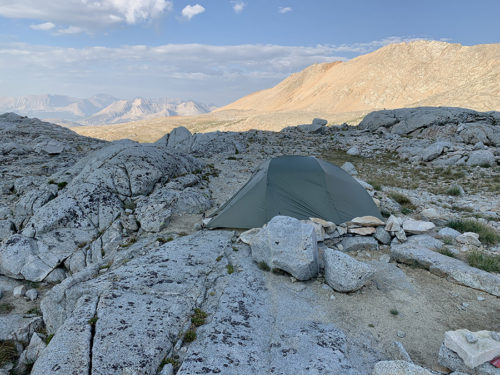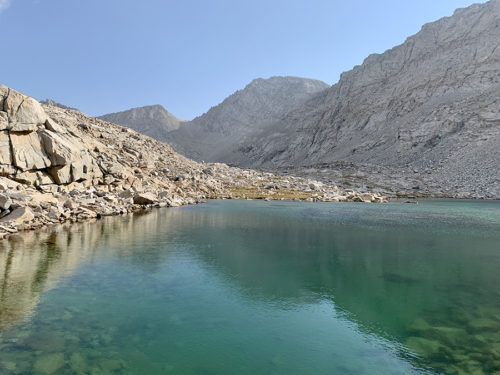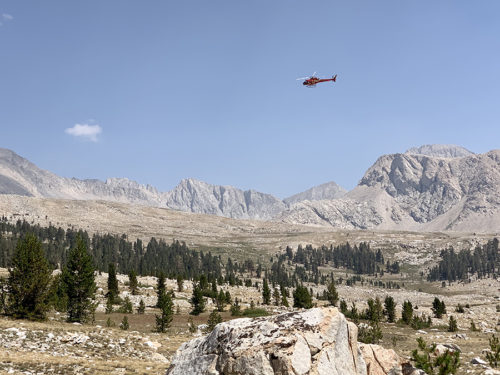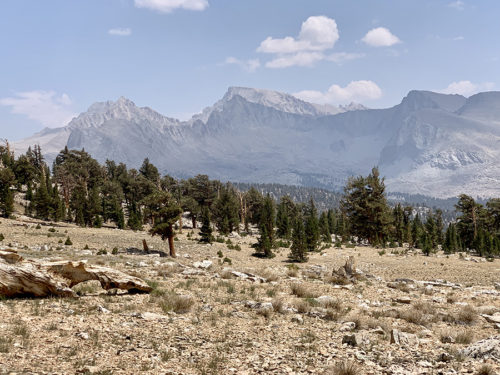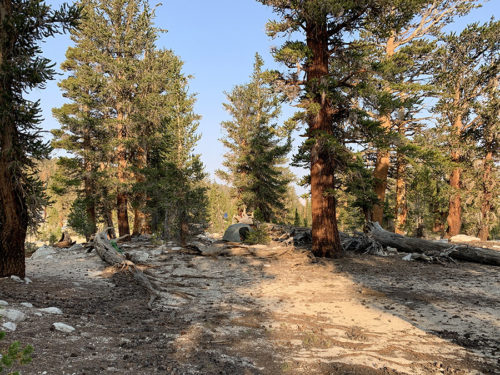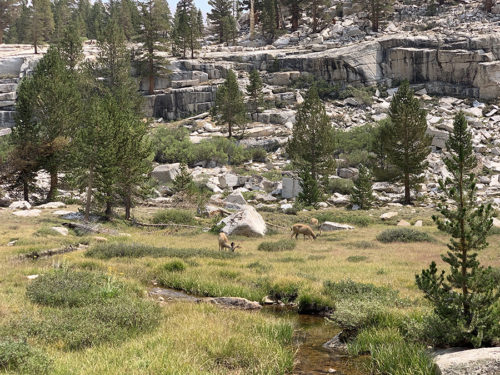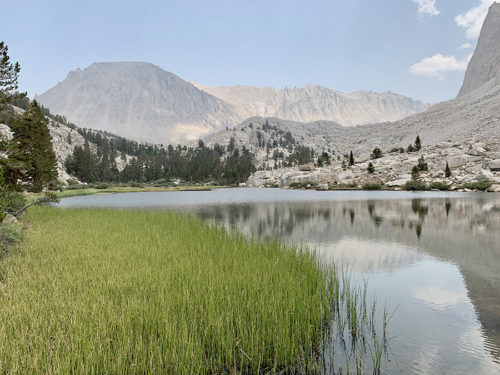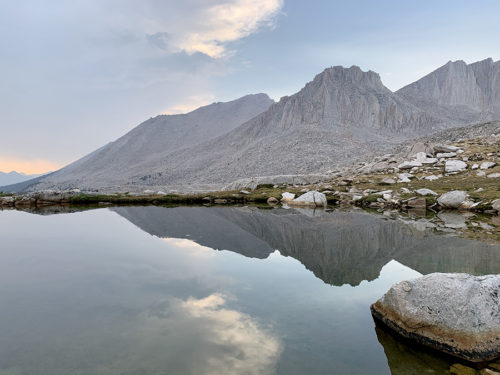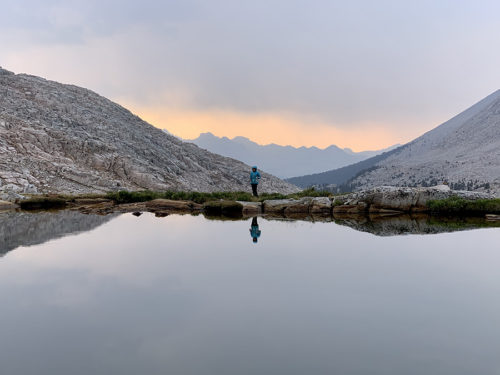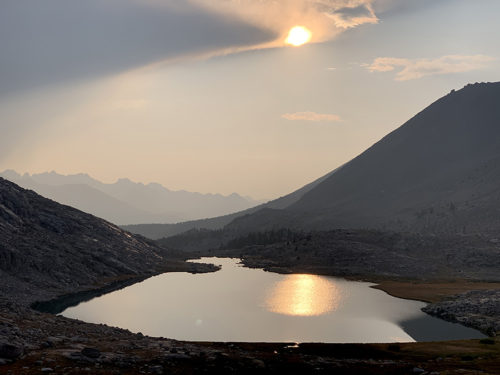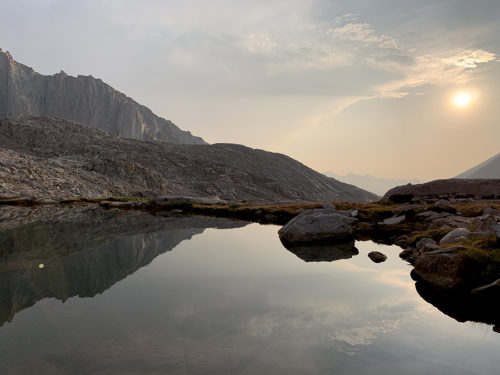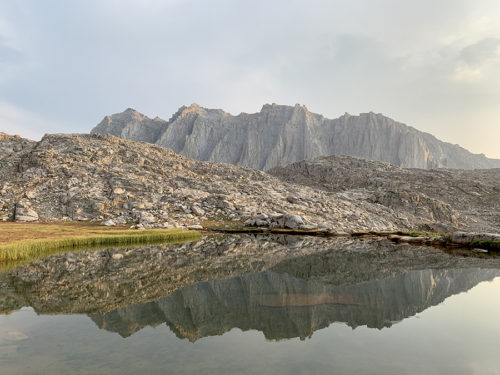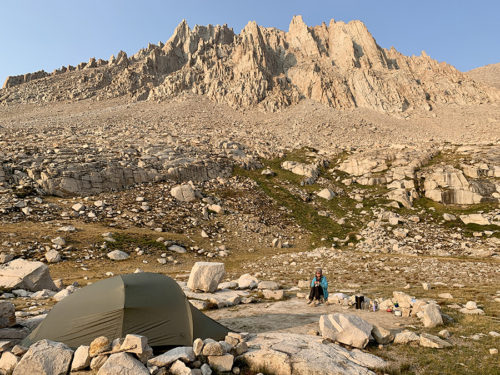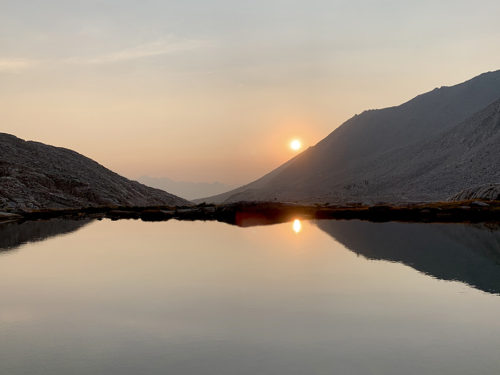Finally visited ☞ Pullman National Monument and residential neighborhood. Important piece of late 19th and early 20th century industrial history of Chicago. George Pullman set-up his company building railroad sleeping cars on the south-side in 1880 and also built small town (Pullman) for its workers.
John Muir Trail 2021
We are back in Chicago. We were lucky this year to obtain permit from Tuolumne Meadow to Whitney Portal (combination of lottery and permit exchange). We had to cancel the trip in 2020. We chose Lyell Canyon entry trailhead to avoid crowds in Yosemite Valley and also because we already hiked most of the first segment of the trail ☞ Tenaya Lake to Tuolumne Meadow, part of our ☞ 2012 trip to the West, and visited the Valley a few years earlier. We drove 4200 miles (round trip) from Chicago to Lee Vining with severel stops on the way. We parked our car at Mono Basin Visitor Center in Lee Vining and took YARTS bus to Tuolumne Meadow, and at the end ESTA bus back from Lone Pine.
We walked SOBO 220 miles (350 km), most of JMT, except three additional short sections when we hiked down to resupply sites and used different cut-offs to get back on track. 14 km total ascent. We actually hiked a bit faster than planned: 8.1 miles per day, 29 days (including two rest days). We used one saved day to get extra rest in Independence and one on the way back to Chicago to make extra stops. We did not really follow the most common JMT daily routine – we were getting to a slow start in the morning and cooking dinner later in the afternoon or evening. We also spent extra time to find more remote camping spots, to comply with the rules (to keep a bit of distance from trails and water), and stay out of the way of other hikers who operated on different schedule. We had no problem finding established sites in most places. We had pretty good plan for each day with alternatives in cases we moved faster or slower. No serious issues with altitude (nor other medical issues) as we walked slowly and hit the highest points later in the hike.
Navigation was not a problem as we stayed on JMT. Used trail plotted in ViewRanger with waypoints from Wenk’s guidebook (John Muir Trail: The essential guide to hiking America’s most famous trail) and Guthook Guide app (John Muir Trail) to quickly identify our position, mostly when we were looking for next water source or campsite. We lost trail only once when walking in the rain through forest burned down last year – soil erosion was so bad it was impossible in places to tell the difference between trail and water run-offs. We had no cellular connection in the mountains even at resupply sites, except on the way down from Kearsarge Pass to Independence and at the edge of Mt Whitney summit. We were able to send messages from VVR and MTR using local computers connected via satellites.
We were lucky with the weather, mostly sunny and warm even at high altitude. Mid-day high temps were mostly in the twenties (°C), in the teens on Mt Whitney, felt warmer with full sun exposure. Sleeping temps were also very comfortable dropping to 8-12°C in the morning (only once to 6.5°C). Some rain on the trail and some after hours when we were able to wait it out in our tent or at night. Nothing too bad. A couple of days with strong wind. The sky was often hazy because of smoke from distant wild fires. One afternoon wind blew more smoke into the valley where we camped, we could smell it but it was not intense enough to affect us much. And from the slopes of Mt Whitney we watched a big plum of smoke appear suddenly on the horizon. We walked half a day through burned forest near Vermilion Valley Resort (VVR).
We were carrying on average 930 g of dry food per day for two, plus small reserve for extra day or so. And we had extra meals at resupply/rest points. All recipes were designed and meals prepared by Joanna to maximize calories/g and minimize cooking time: just bringing water to a boil (or even just using cold soaking to which we did not have to resort to). Calories were limiting – Piotr lost almost half a pound per day. Water was plentiful on most days, so there was no need to carry a lot. We did frequently refill our bottles when resting (UV sterilized). We used our full water carrying capacity only once for dry camping at Young Ridge. We started with lighter loads (fewer days to carry food for). Still there was a lot of going up and down, and up again. Our backpacks got quite heavy after resupply for the 10-day third section: Piotr’s backpack topped at 38 lb and Joanna’s at 23 lb.
Joanna spent nearly two years on research, extra long as we lost 2020 hiking season. She drafted daily hiking plan, investigated resupply options, tested new food recipes. Piotr prepared digital maps and navigation tools. We modified/updated our hiking kit. Anything to cut weight.
 Map overwiew
Map overwiew
JMT from Tuolumne Meadows (top) to Whitney Portal (bottom). High passes and Mt Whitney = yellow icons.
 Resources and hiking kit
Resources and hiking kit
Guides, maps and navigation
Piotr’s packing list
Piotr’s backpack
Water, food, kitchen
More hiking kit
 JMT video clips
JMT video clips
 Other video clips
Other video clips

With good weather and us feeling well, we were confident Mt Whitney was within reach – flat summit hiding behind rock outcrops near the end of the video. We looked down at the valley where we camped the night before and surrounding mountains, and the mountain range on the horizon we crossed to get here (and many more before it). Not bad.
Highlights
5-day return from JMT to Chicago
We made last minute decision to take different route on the way back home: crossing Utah and Colorado to Denver on I-70. We made short stops at Great Basin NP, Colorado National Monument and Silverthorne at Dillon Reservoir. We divided the extra day saved on JMT between these places to have at least some time to look around. We stopped in North Platte for the last night just to break the miles.
But first we had to get back to our car in Lee Vining: 3-hour 122-mile ESTA bus ride from Lone Pine and 1-mile street walk to Visitor Center, final backpacking effort of the trip. Our car was fine waiting for us. We stopped briefly at Mono Basin Historical Society exhibition to examine old, rusting machines and then had dinner for breakfast at Whoa Nellie Deli (Piotr had big steak and two x-large lattes with extra shots) and very soon started crossing Nevada on now familiar Rt 6. We diverged in Elly to visit Great Basin NP. Found nice spot at Baker Creek Campground (recommended). Tickets for full Lehman Caves tour were sold-out and road to Wheeler Peak Summit Trailhead was closed, we walked nature trail near visitor center and hiked 4-mile Baker Creek loop instead. Interesting flora ecosystem – Pines, Aspen, Curlleaf Mountain Mahogany and shrubs. Wheeler Peak always in the background. Stopped for lunch at Baker Creek picnic area and started driving towards Utah.
Driving across west-central Utah: straight empty highways for miles (flat Sevier Desert), then colorful hills, and later cliffs and canyons with interesting rock formations. We only had time to stop at couple of viewpoints on I-70, but agreed we should come back to explore this part of the country. It was getting dark, so we decided to stay at motel in Green River. We later regretted the decision – campground at Colorado National Monument was great, as we discovered next day, and far better option even if we arrived very late. Dark clouds greeted us when we arrived at Colorado National Monument, but not much rain fell and the rest of the day was mostly sunny. We spent several hours on 23-mile Rim Rock Drive on top of the mesa. Stopped many times to view canyons and walk short trails to interesting rock formations. We spent afternoon and evening driving into the Rockies, across Vail Pass to Silverthorne. The area was packed with tourists, mostly bikers, but despite arriving late at Heaton Bay Campground we got nice campsite. Next morning we did two short walks: along the banks of Dillon Reservoir and to the Old Dillon Reservoir. The rest was just driving: CO, NE, IO and IL – familiar route we were on multiple times before.
 Independence Monument View (Colorado National Monument)
Independence Monument View (Colorado National Monument)
Independence Monument View
 Ute Canyon View (Colorado National Monument)
Ute Canyon View (Colorado National Monument)
Ute Canyon View
JMT day 28 & 29: Mt Whitney and to finish in Lone Pine
Mt Whitney (4421 m) day started shortly after midnight – we heard voices of quite a few hikers moving up the trail to catch sunrise on the summit. After breakfast we were on the move too, at 9 am. Some people already came down from the summit. The trail is not particularly difficult or steep, just steady going up 900 m. In addition, last 3 km and 350 m ascent was without backpacks (left them at trail junction). To Piotr final approach looked somewhat reminiscent of Ben Nevis (hiking from north face), grander scale of course – both summits are flat piles of stones with precipice on one side. We were hiking in full sun and in comfortable temperatures, but wind gusts were getting very strong. We watched big plum of smoke developing from very recent fire. Distant sky looked hazy (smoke), as most of the days – more so during second half of our hike (even more smoke in Onion and Owens and Valleys). All what looked before like big mountains were now below us. We spent an hour on the summit which was deserted (all but a few people hiked down already) and very windy. Finally, we had cell connection to check messages and e-mails, and call friend – we always tried to keep our friends and family informed about our whereabouts.
We walked down back to the trail junction to collect our backpacks, crossed over Trail Crest (4166 m) couple hundred meters away and started descending to Trail Camp Tarn on 99 switchbacks. When we arrived late in the afternoon many camp sites were already occupied and we spent quite a bit of time looking for something suitable for our tent and at least partially shielded from wind coming down from the crest. Joanna preferred less windy spots under rock walls, but Piotr did not like a threat of puddle or stream under the tent in case of rain nor driving stakes into granite. One strong wind gust caught us just as we were unfolding our tent, we managed to hold on to the sail, but next gust bent one of aluminum posts (remained usable). Once everything got nailed down we were OK. It was clear our larger tent was not suitable to camp on the summit – yes, crazy idea to dry-camp there crossed our minds. We were rewarded in the morning with nice views towards Mt Whitney, although its summit was not visible from this spot. Joanna cooked last backpacker’s breakfast and coffee, and we were on the way to the trailhead. Nice scenery with lakes and Lone Pine Creek, greener and greener. At a rest stop Joanna lost her favorite beanie hat which she had on all treks, on four continents. Many more people on this side of the mountain, often on day-hikes. We were greeted and cheered on arrival – finishing JMT is considered quite an accomplishment.
We ate big lunch at the store at Whitney Portal and started asking around to hitch a ride to Lone Pine. Not difficult, but took longer than in Onion Valley. We, and another hiker, got a ride all the way to Dow Villa Hotel where we stayed for the night. In the past, many actors stayed at the hotel when filming at nearby Alabama Hills. We ate, did laundry and shopped to get ready for return to Chicago.
 View south to west from Mt Whitney summit
View south to west from Mt Whitney summit
View south to west from Mt Whitney summit
 View west to north from Mt Whitney summit
View west to north from Mt Whitney summit
View west to north from Mt Whitney summit
 Mt Whitney teeth (summit out of sight)
Mt Whitney teeth (summit out of sight)
Mt Whitney teeth (summit out of sight)
JMT day 24-27: from Independence to Mt Whitney base above Guitar Lake
We started the final 6-day 48-mile section well rested and relaxed. The plan was to do it in 7 days. With stable weather pattern and a spare day to wait out bad weather, lighter backpacks and good physical conditions we were ready for Mt Whitney. We were already acclimatized, so going quickly up above 3000 m from 1200 m (Independence) was not a problem. Mt Whitney was of course in our plans, but we never made it into ambition satisfying goal. Just as we never intended to go faster or cover longer daily distances – we could in case of emergency, but it was not necessary. Joanna was hoping we could start moving earlier in the morning, but it did not work on the trail.
We worried about return to high mountains from low elevation of Independence with heavier = resupplied backpacks. Owner of Independence Inn drove us (and another hiker) to the trailhead. We had plenty of time to get ready the day before, so we took off earlier. First half of the day we were hiking through familiar landscape. It was actually fun to see everything from opposite direction. On the way down we selected possible campsites and convenient points to refill water bottles. None of this was necessary: we forgot to get water, jumped over Kearsarge Pass and passed “just in case” campsites, and kept going with ease and further than planned. Our bodies were already well trained, our backpacks and food rations optimized, and we were after full day of rest. We started saving time again – it was important to have some time reserve to wait out bad weather for Mt Whitney day. We passed Bullfrog Trail junction where we camped 3 nights earlier. Then down to Bubbs Creek and up the creek to Upper Vidette Meadow (which looked more like forrest). 9.9-mile day with 1000 m total ascent. We quickly found nice campsite at the creek and had sunny time to relax.
 Bubbs Creek Spa, Pedicure & Nails
Bubbs Creek Spa, Pedicure & Nails
Bubbs Creek Spa, Pedicure & Nails
In the following 3 days we hiked to the base of Mt Whitney, just above Guitar Lake. We continued along Bubbs Creek and then up to Forester Pass, the highest pass on the trail (4009 m) gaining 1000 m. Some switchback sectors were steep, but somehow did not feel extremely difficult. We made it to Lake 12250 and reached the pass later than any other hikers that day. Weather was nice on the north side, but at the pass we saw dark clouds spreading to the south so we quickly descended to Tyndall Creek. Scenery around Forester Pass looked quite “high altitude” = bare rocks all around. Camping at the lake before pass (considered in case we got tired early) would be difficult, just piles of rocks everywhere, and once we started going downhill we continued to second of two lakes on Tyndall Creek below Diamond Mesa. We found good spot, but exposed and wind started to pick-up. It was the highest campsite of the trip – 3730 m. The Sun was still high so we climbed down the rocks to waterfront, washed and refilled water bottles. Joanna was cooking and Piotr was attaching our tent to Mother Earth, well after dark. Wind gusts were strong and we had some rain at night; it all cleared overnight. Still it was one of our favorite campsites, near lakes and with nobody else for miles in any direction.
Next day was down Tyndall Creek, up to Bighorn Plateau and Lake (dry) where we had first view of Mt Whitney (not too scary from this angle), down to Wallace Creek, up to Young Ridge. We saw helicopter search and rescue near Shepherd Pass Trail junction, did not learn any details, but decided to refresh our knowledge of hand emergency signals when we get home – we did not send any to avoid confusion, just walked down steadily to show we were not seeking help. We arrived at Wallace Creek quite early and decided to continue to dry-camp at Young Ridge. We brought extra 2 L juice bottle from Independence (for dry-camping) – we filled everything up at the creek. It was very good decision, we were ahead of schedule one full day again and camping at Young Ridge saddle was most relaxing of all: sunny, warm, beach-like sandy, interestingly lit forest, evening and morning. No neighbors of course. And we made next day just 6 miles long: down to Whitney Creek, up to Timberline Lake, Guitar Lake and a small tarn above it. Storm was brewing when we arrived at Guitar Lake but Joanna decided to push on. Weather patterns during our hike were always confusing and we just kept going most of the time, but this time it looked really bad. High mountains held the storm just long enough for us to pitch our tent, the only time we did not really care where the spot was (we discovered much better spots later). It rained, lightings and thunders, and then it stopped just before dinner and sunset. Very lucky ! It was a beautiful place, with tarns and view of Guitar lake and high mountains. We were all certain of good weather for coming days and Mt Whitney summit.
 View from Forester Pass
View from Forester Pass
View from Forester Pass
 Waiting out storm at tarn above Guitar Lake
Waiting out storm at tarn above Guitar Lake
Waiting out storm at tarn above Guitar Lake
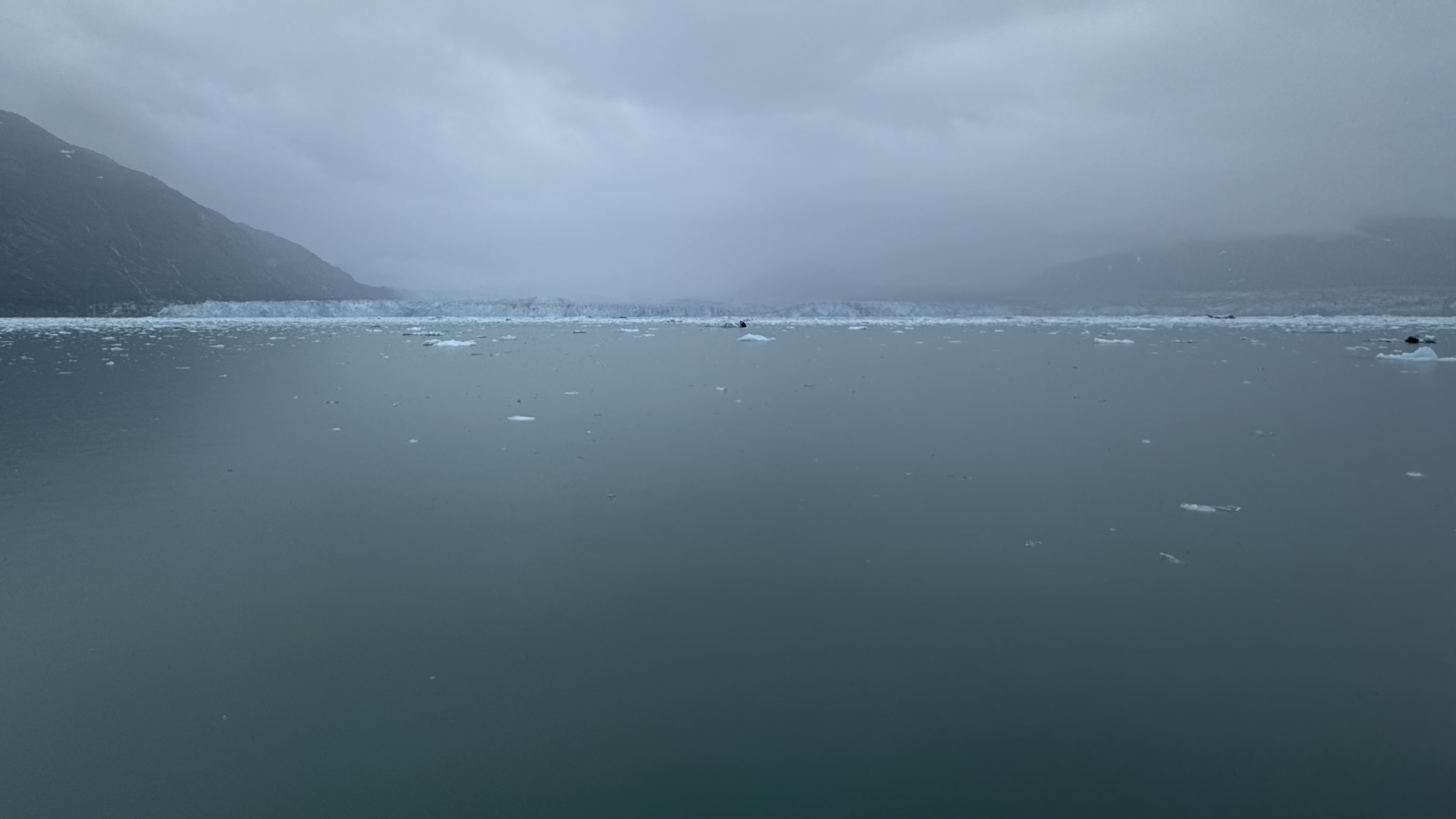
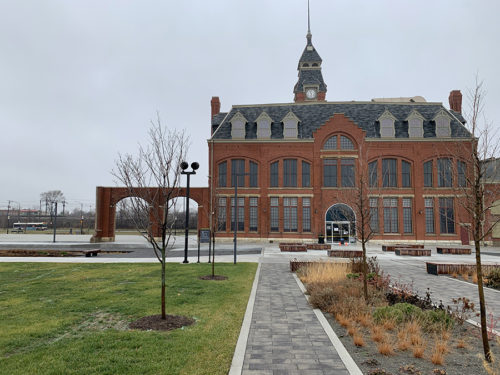
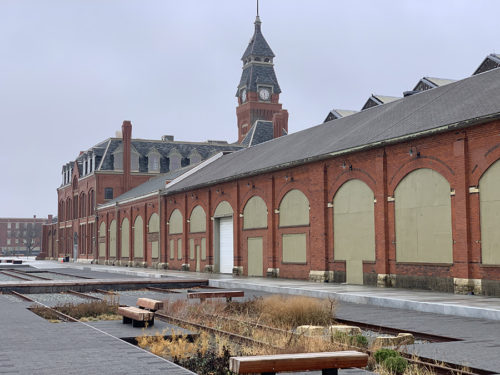
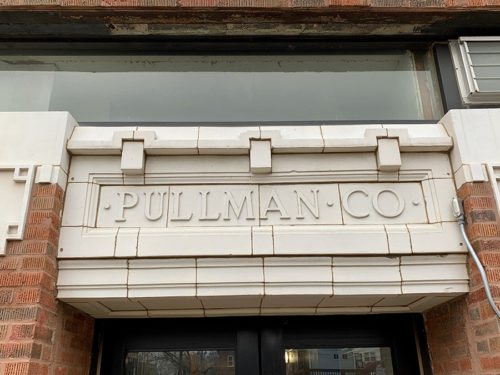
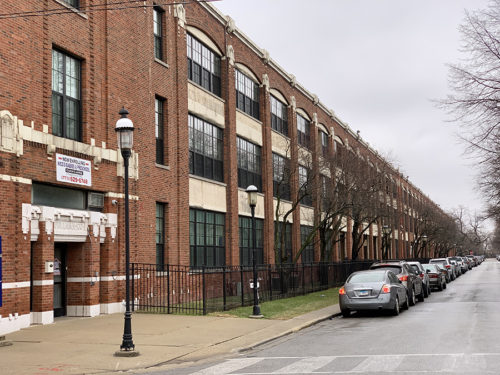
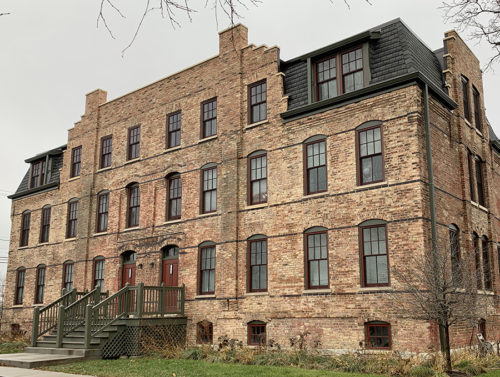

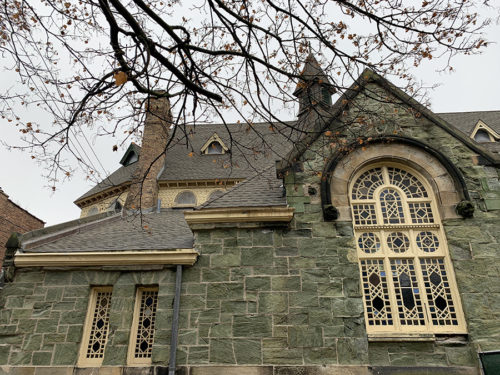
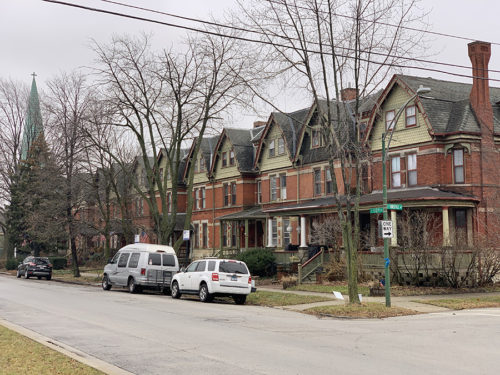

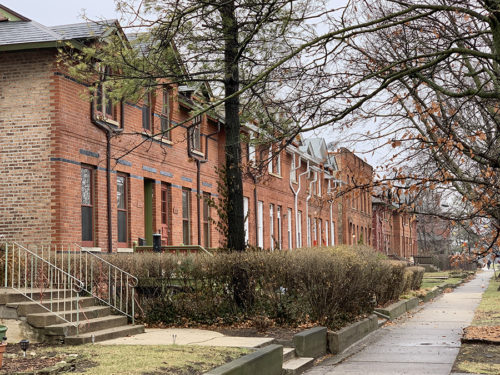
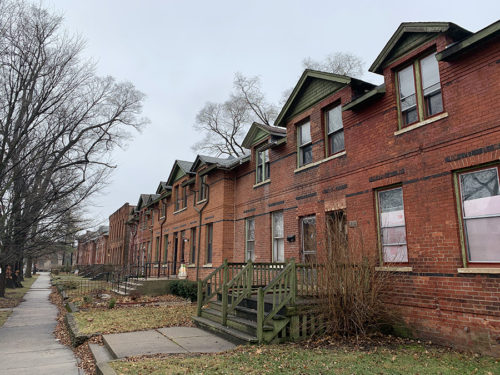
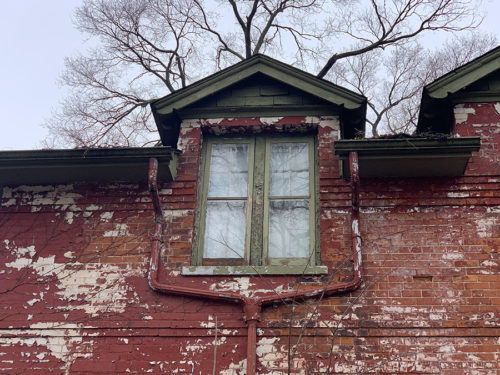
 JMT 2021 itinerary
JMT 2021 itinerary